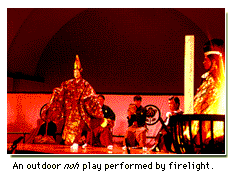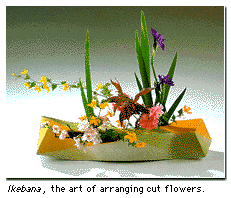 |
 Japanese
culture was influenced in many ways by the cultures of other countries.
Over the years, though, it developed into a distinctive entity that had
a considerable influence on others as well. Japanese
culture was influenced in many ways by the cultures of other countries.
Over the years, though, it developed into a distinctive entity that had
a considerable influence on others as well.
Between the fifth and ninth centuries Japan was an active importer of culture, particularly from China and the Korean Peninsula. Among the major imports were written characters, Buddhism, Confucianism, and the know-how to plan and build cities. Japan subsequently developed its own alphabet--written with two sets of characters called hiragana and katakana--derived from Chinese letters, and many indigenous sects of Buddhism were founded. |
 The world's oldest
novel--the Tale of Genji --was written in Japan in the eleventh
century. Japan's traditional arts include the stage arts of kabuki
and noh, the tea ceremony, ikebana
(flower arrangement), shodo(calligraphy),
haiku-writing, and ukiyo-e --woodblock prints developed
in Japan's premodern era. Ukiyo-e is said to have had a major influence
on the French Impressionists. The world's oldest
novel--the Tale of Genji --was written in Japan in the eleventh
century. Japan's traditional arts include the stage arts of kabuki
and noh, the tea ceremony, ikebana
(flower arrangement), shodo(calligraphy),
haiku-writing, and ukiyo-e --woodblock prints developed
in Japan's premodern era. Ukiyo-e is said to have had a major influence
on the French Impressionists.
Even today, Japanese elementary and middle school children study calligraphy and learn how to write haiku in the classroom.

|
